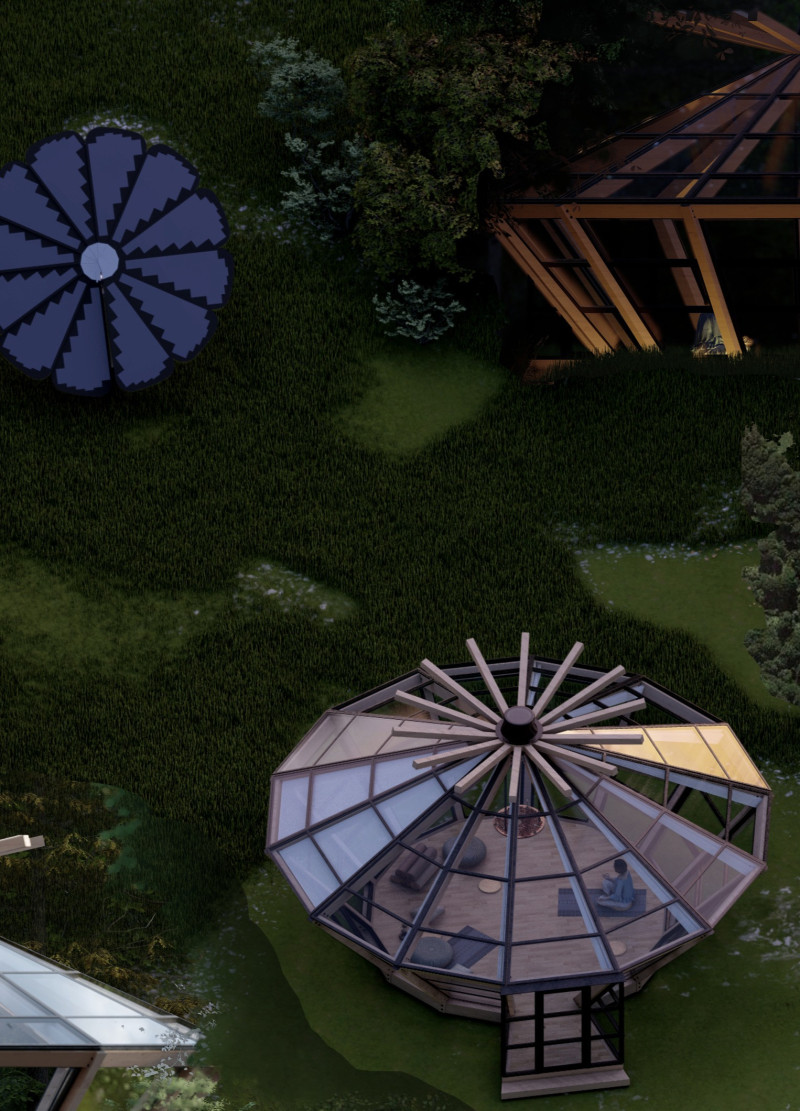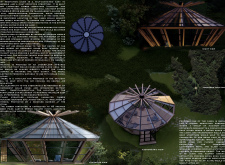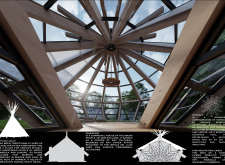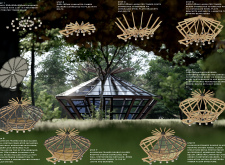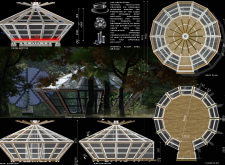5 key facts about this project
The Kiwi Meditation Cabin is designed to provide a tranquil space for meditation and contemplation in a calming natural environment. Its overall concept focuses on creating a connection between its occupants and the surrounding landscape. The cabin serves as a place for guided meditation, as well as offering flexibility for other activities while maintaining a peaceful atmosphere.
Design Concept
The cabin's design emphasizes a strong connection between interior and exterior spaces. Its circular layout helps users engage closely with one another while allowing for personal moments of reflection. By incorporating large windows and an open roof, the space draws in natural light and keeps the experience grounded in the environment.
Comfort and Functionality
User comfort is central to the design. Large operable windows around the cabin permit fresh air to circulate, creating a refreshing atmosphere. A roof window enables hot air to rise and escape, preventing the space from becoming stuffy. Furthermore, retractable shades integrated into the roof structure allow occupants to control sunlight levels, supporting a comfortable environment for those meditating.
Materials and Construction
The materials chosen for the cabin enhance its functionality and aesthetics. Laminated timber from Techlam is used for key structural elements, providing strength and support. The walls and roof feature an aluminum-framed double-glazed system, which improves insulation. The interior flooring consists of laminated beams with PIR insulation, ensuring energy efficiency while offering stability.
Unique Design Features
Among the cabin's clever details is an altar for flower essence extraction, designed to be lowered with a pulley system. This allows for practical usage without disrupting meditation. The foundation uses treated timber piles set into concrete footings, ensuring stability while accommodating the natural drainage of the site.
The circular skylight positioned above invites natural light into the cabin while serving as a source for ventilation. It also encourages reflection, adding to the contemplative experience within the space.


